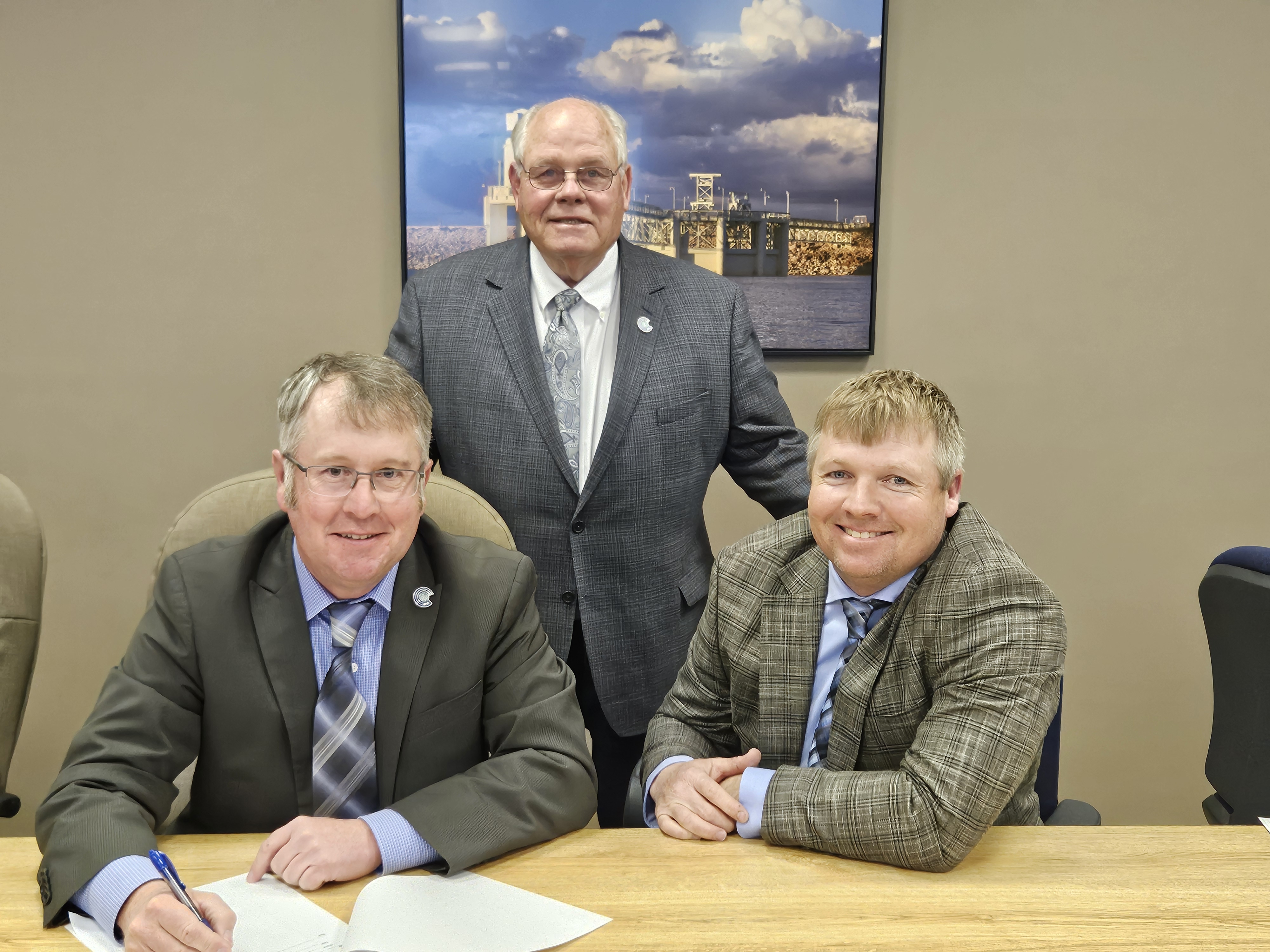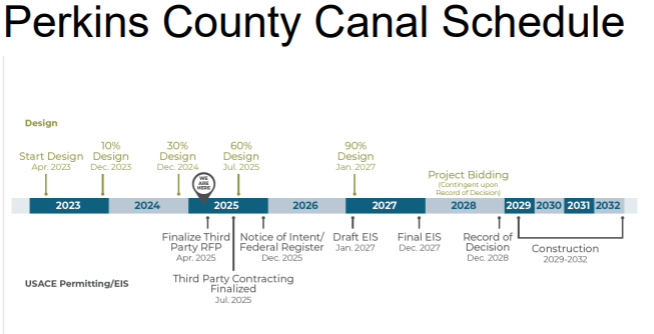
At Central’s February Board of Directors meeting, a Memorandum of Understanding was approved with the Nebraska Department of Natural Resources (DNR) regarding the Perkins County Canal.
Within the memorandum, Central confirms that it experiences limited irrigation supplies because the demand exceeds the supply available from the Platte River basin. It also confirms that Central’s facilities and infrastructure could be used to distribute the South Platte River water deriving from the construction of the Perkins Canal. Both DNR and Central agree to work together to ensure irrigation needs of the Platte River basing are better met using the Perkins Canal Project.
In 1923, Nebraska and Colorado signed the South Platte River Compact to resolve a dispute to legally divide the river’s water. This compact is recognized as both state and federal law.
Two key components of Article IV of the Compact include:
- Limits irrigation season uses in Colorado to benefit Nebraska water users. Colorado must limit its water use whenever the river’s flow at Julesburg drops to 120 cubic feet per second (cfs).
- Contemplates a diversion (envisioned as the Perkins County Canal a.k.a. South Divide Canal) and authorizes Nebraska to divert 500 cfs during the non-irrigation season and any available flows into the canal.
Since the Perkins County Canal remains unfinished, Colorado continues to increase its diversions and water use during the non-irrigation season without restriction.
| Irrigation Season (April 1 to Oct. 15) | Non-Irrigation Season (Oct. 15 to April 15) |
|
|
Once the project is completed, Colorado will be required to limit its water use during the non-irrigation season to comply with the South Platte River Compact and preserve flows for Nebraska. The 500 cfs of water that would flow into Nebraska and be stored in reservoirs as part of this project would be enough to fill Lake McConaughy in 5-6 years.
The Perkins County Canal and associated water storage reservoirs are expected to cost approximately $628 million and fortunately Nebraska’s legislature made the bold decision to authorize and fund the project. The estimated benefits range from $1.4 to $2 billion statewide and will help secure Nebraska’s water future.
